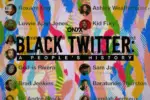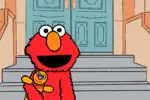Tumblr is dead. Joining a slew of iconic, yet dated, exhausted, but not forgotten apps like Kik and Vine that failed to prevail through the rapid evolution of social cyberspace. But, as everyone knows, endings leave room for new beginnings and niche social spaces left unoccupied are quickly filled by new online platforms — thus, the movement of the young “it” girl from quirky feeds of the outworn Tumblr to the fresh, simple VSCO.
Where Instagram failed to act as a cultural space that is virtually free of older, parenting users, VSCO, along with apps YOLO and Tik Tok have recently succeeded as successors, catering to an entirely new generation of internet users.
But years before its death, which was made final after porn activity was banned, Tumblr’s prime years provided a platform for artsy flower-crowned teens, Brandy Mellvile OOTD pics and vibrant drinks off of Starbucks’ supposed secret menu.
It was a unifying space that helped give birth to the image of the early 2010s “basic” girl. By 2017, Tumblr was no longer what it had been known for only three years before, its reputation and content shifted. Without strong content restrictions, the app became a second-hand meme hot-bed and reliable source for free black-and-white softcore porn GIFs.
Cue VSCO, a clean, easy-to-use editing app that became popular for the killer photo presets that are now silently considered essential to any well-curated feed from travel blogger to fitness junkie to sorority girl. VSCO keeps out the ultra-saturated, often-tacky-but-fun edits that many other apps promise. What it offers instead is a social aspect. Users get their own profile and can see the posts of those that they follow on their feed.
As a social media platform, it’s much like a watered-down version of Instagram, but instead of stories, it holds a section titled “journal” where users can make forever blog posts. Due to the way that the app’s privacy settings are constructed, it’s not a platform made for private accounts or finsta equivalents. VSCO is an app for sharing photography and clean visual edits; it’s for curating the online image of our ideal selves.
The “VSCO girl” lives in this ideal. She’s the teen that appears to have it all. She’s online like the e-girl, but instead of being bold and edgy, she’s mainstream. Much like basic Tumblr girls, she flaunts popular brands like Urban Outfitters and participates in trendy activities like saving turtles, skateboarding and sun tanning. In the minds of other aspiring “it” girls, the VSCO girl acts as a celebrity by curating a pristine online aesthetic.
While Tumblr has long since evolved from the era that gave birth to the Tumblr girl, it’s obvious that the app was once a habitat for the same types of people that VSCO now hosts. Both apps encourage users to be a photographer, an editor and a content creator. Users on both platforms can interact with their mutual followers and popular accounts by reposting work to their personal pages.
The profiles of both Tumblr and VSCO accounts are heavily centered around visuals, like Instagram, but, unlike Instagram, the visuals shared to the former are typically less centered around presenting the user’s face and personal life. Instead, VSCO and Tumblr act to share the world that surrounds us via quiet travel photos and blurry GIFs of smiling friends.
Where Tumblr and VSCO differ might be where Tumblr failed and VSCO succeeds. As a social platform, VSCO is built to be much more niche than its predecessors. There are no customizable profile options. The sleek, minimal layout of VSCO ensures that the application resists an overarching tackiness, even when individual posts themselves are tacky. Reposts are limited to their own section on a user’s VSCO page, meaning that posting one’s own content is more encouraged as it’s required to fill one’s personal feed.
Thus far, the app appears void of memes and “cursed” content and instead focuses on aesthetics. Tumblr, on the other hand, was much more customizable and appealed to a diverse audience. The Tumblr girl was just one niche group among many other users.
Yet other key Tumblr features remain missing, at least on VSCO. For example, VSCO is not built for short-form text posts or written content that is unaccompanied by images. Poetry, horoscopes and thought posts that shaped the Tumblr generation have ceased to exist or found their way onto living text-friendly platforms.
So, has VSCO filled the space that Tumblr once occupied?
In some ways, yes. While VSCO and Tumblr clearly have their differences, they both created a space for “it” girls to thrive. However, the niche essence and advanced editing capabilities that VSCO provides for users takes the app to new territories and caters more to a specific audience than its precursor. In essence, Tumblr curated an environment that permitted for the existence of “it” girls until they could find a platform allowed them to achieve their most perfect form yet, the VSCO girl.
On the other hand, Generation Z has made clear there’s no longer a single definition of the ideal girl. It’s socially acceptable to fit into or break any category: whether you’re an e-girl, a soft girl, a VSCO girl or not a girl at all. The social role of the “it” girl has lost appeal since the peak of Tumblr. And in that way, the cultural space that Tumblr fostered for the early 2010’s “it” girls and other icons of the time can never be replaced.
















